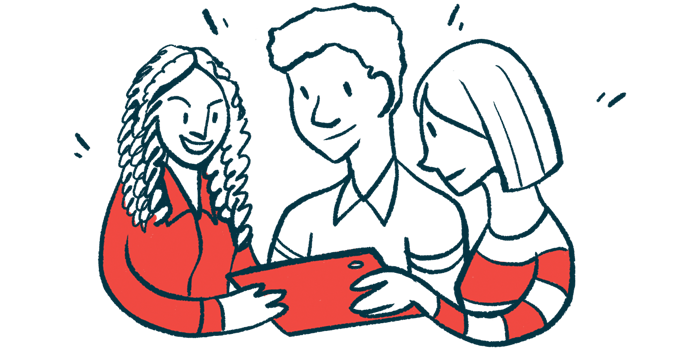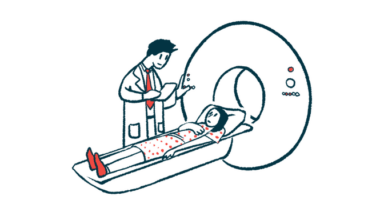AAV Patients Independently Adopt Self-management Techniques

People with ANCA-associated vasculitis (AAV) adopt a range of strategies that help them to better cope with the condition on their own, but several areas of self-management could be addressed more immediately through conversations with their physicians, a study found.
The study, “Addressing the transition to a chronic condition: exploring independent adoption of self-management by patients with ANCA-associated vasculitis,” was published in Rheumatology Advances in Practice.
A growing movement in chronic illnesses aims to enable patients to take a greater role in maintaining their own long-term health.
This greater involvement is often facilitated by self-management programs, which provide patients with the skills necessary to manage their symptoms and treatments, as well as a better understanding of the physical and social consequences of living with their disorder.
The COVID-19 pandemic further highlighted the importance of autonomy for people with chronic illnesses, due to its restricted access to healthcare, researchers note.
AAV is associated with a wide range of symptoms that can lead to a lesser quality of life, lower levels of social participation, fewer employment opportunities, and poor mental health. The disease was previously seen as terminal, the study noted, but with advances in treatment it can now be considered chronic.
Yet, self-management training remains elusive, and patients often have to adapt to their condition on their own.
Now, researchers at the University of Birmingham, in the U.K., set out to identify the self-management strategies used by AAV patients after their diagnosis.
Participants had been enrolled in the FAB-V trial (ISRCTN11929227), originally designed to determine whether a physical activity intervention could help combat fatigue. About 18 months after enrolling, patients were invited to participate in focus group discussions that addressed their experiences with symptoms, treatments, and side effects, as well as measures taken to mitigate them.
Three focus groups were conducted, two with patients given the physical activity intervention in the trial and one with those assigned to standard of care alone. A total of 15 patients were included in these interviews (nine were men), and they had been diagnosed an average of 7.2 years earlier.
Eight patients who did not participate in the trial also were contacted by the trial investigators to share their experience with AAV. These patients had lived with the disease for a longer time — a mean of 13.2 years.
The researchers looked at three key processes toward self-management of chronic illnesses, as defined by the Schulman-Green self-management framework (SMF): focusing on illness needs, activating resources, and living with a chronic illness.
When it comes to focusing on illness needs, “chronically ill patients are required to understand the parameters of their disease, its symptoms, their treatment and any potential side-effects,” the researchers wrote.
Many of those interviewed spoke about gathering information about their condition, although to varying extents: more proactive patients accessed relevant information independently, for example, through their support groups, whereas more passive patients were less inclined to seek additional information.
With regard to symptoms, these individuals grew to understand the pattern of symptom presentation, such as fatigue and nausea, over the course of their days.
Additionally, patients independently managed side effects through activity modifications, such as reducing sunlight exposure due to increased sensitivity, or minimizing contact with sick people due to a compromised immune system, a key component for full self-management.
Furthermore, many chronically ill patients took upon themselves behaviors to improve their health and well-being, such as exercising more and eating healthy.
Self-management also requires that patients access their necessary healthcare, and psychological, social, and community resources. Some of the access to healthcare requires the patient to successfully navigate its system, and some AAV patients found ways to do so. However, the researchers found, clinicians may be able to provide patients with better direction in this regard.
A lot of patients also drew from their own psychological resources and resilience to navigate their condition. “I have vowed that it’s not going to beat me,” said one male patient, who had been diagnosed 1.5 years prior. “You’ve got to get it in your mind, I think, that it’s not going to beat you; you’re going to beat it and keep going at it!”
The patients also learned to use the support provided by their family, friends, and peers to keep going in their daily lives. Additionally, community resources, such as peer support groups or organized communal activities, were found to further bolster self-management.
“A patient’s integration with their social network is a recognized determinant of health-related outcomes in the chronically ill, reducing the psychological and physiological effects of stress and isolation and increasing well-being,” the researchers wrote.
In the long-term, self-management requires additional tools, such as “processing and sharing emotions, adjusting to changed circumstances, integrating the illness into everyday life and seeking for meaning from their experience.”
As patients come to terms with their diagnoses, many began to explore and express a range of emotions and feelings. The researchers noted that addressing their effects on each individual’s confidence and activity level is important for long-term self-management.
Furthermore, self-management strategies require patients to adjust to their newly changed circumstances, integrating their illness into everyday life, which often requires creating a balance between their other obligations and the need to manage their illness. One patient gave the example of allowing flexibility when it comes to routine household activities; another spoke about the need to reduce responsibilities and hours at work.
AAV patients, similar to other patients with chronic conditions, also tried to make sense of their condition, which includes showing an appreciation for the life they have, as well as an appreciation for getting diagnosed when they did and receiving the medical care that they have.
“Over time, patients diagnosed with a serious chronic condition re-evaluate their priorities and, in the process, can develop optimism and self-worth,” the researchers wrote.
The patients also provided insight into areas where clinicians may be useful in navigating the path toward self-management, including advising them on diet and exercise, directing them toward reliable sources of information regarding their condition, and guiding them toward peer groups for support and shared activities.
Overall, the “findings suggest that AAV patients have initiated independently many of the same self-management behaviours as those used in other, more common chronic conditions, for which there are routine and formal self-management programmes.”








